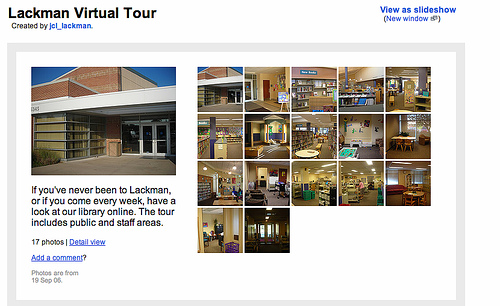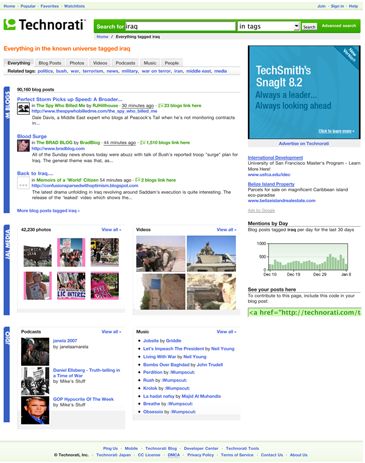 I attended the Top Technology Trends meeting at ALA Annual 2007 on Sunday, June23rd. The trends are less about the technology and more about the outcome – the collaboration and community that comes from using the technology. The “toys”, the things we’re learning about in the 23 Things program and more, are just tools we use to accomplish the goal.
I attended the Top Technology Trends meeting at ALA Annual 2007 on Sunday, June23rd. The trends are less about the technology and more about the outcome – the collaboration and community that comes from using the technology. The “toys”, the things we’re learning about in the 23 Things program and more, are just tools we use to accomplish the goal.
1) Open source software is no longer just for the techie community. It can be used by libraries to replace their ILS, to add content to an ILS, for wikis, blogs and many other things.
2) Shore-up the back-end
John Blyberg said, “We can create a demand for the long tail, we have to be able to support it.” We can add these cool new services but we have to remember that new content needs to be continuously added to blogs to keep them interesting and current; wikis need to be maintained; support needs to be available from technology support departments in the form of people who know about and can support the cool new services, the hardware for these services to live on, and the software to run them. And there has to be the time to do all of this.
Joan F. Williams also said that we have to remember not to implement a new technology and then abandon it. Don’t stop once your new technology is implemented. There are a lot of libraries out there who have implemented blogs but have since abandoned them. Learn from the mistakes and the successes of your new technology and take it a bit further. Do more with it.
3) ILS systems need to be more modular.
John Blyberg would like to see a trend toward vendor interoperability where we could take the “best of breed” and “mash” them up to build a better ILS for the future. Roy Tennant actually forsees the demise of the catalog as we push the ILS back and use new tools such as Primo, Encore and World Cat Local.
4) End User as Content Producer Karen Coombs says that currently more than 62% of all US households own digital cameras. As Flickr, Blip.tv, YouTube and other web-based services offer a place for users to store and share their content, what happens if these services disappear? Who is taking responsibility for preserving the cultural memory of our society in digital format? What can libraries do to collect digital objects of value to local history and cultural memory? One possibility is what is being done by the National Library of Australia as part of the Picture Australia Project.
5) The line between desktop and web applications becoming more blurred. Karen Coombs sees the line between desktop and web applications becoming more blurred.
6) Grasp the potential of the new technology and use it to its best advantage. Joan F. Williams said that you don’t gain the advantage of using new technology if you’re just replacing the old tool with a new one. We have to grasp the potential of the new technology and use it to its best advantage. For example, if you buy a cell phone with a camera but still only use it as a phone, then you haven’t gained anything. Why bother having the new phone at all? A lot of systems are doing the 23 Things program. Even though the technology scares some people, we need to be able to grasp its full potential. “We’re toast if we don’t grasp the full potential.”
7) The nature of the library website as a place will change just like the physical library is changing. It will become more interactive and collaborative as mashups of library data increase and are used directly instead of visiting the library website. Everyone felt that the library website would still be necessary.
8) You might want to watch Meredith Farkas’ presentation of her top trends, http://s2.video.blip.tv/0330000525303/Librarianmer-MeredithsTopTechTrends705.swf .
9) Check out the archives for LITA’s top technology trends to see trends posted by those members of the committee who couldn’t make the program at ALA this year.
 RSS feeds from the library catalog – searches to watch, favorite subject headings, favorite authors, new books, etc.
RSS feeds from the library catalog – searches to watch, favorite subject headings, favorite authors, new books, etc.




 I found this good explanation of the difference between tagging and categories.
I found this good explanation of the difference between tagging and categories.






Recent Comments